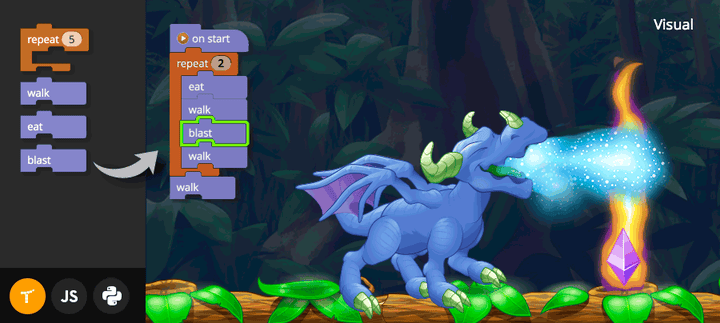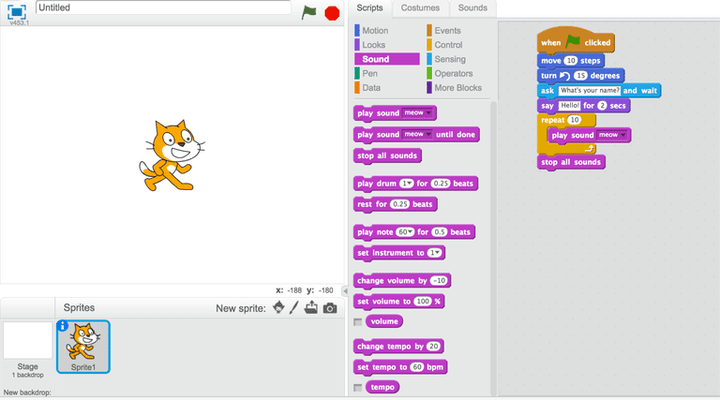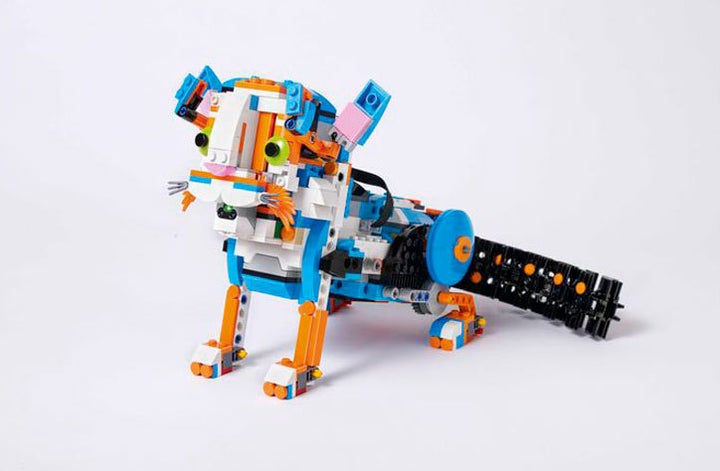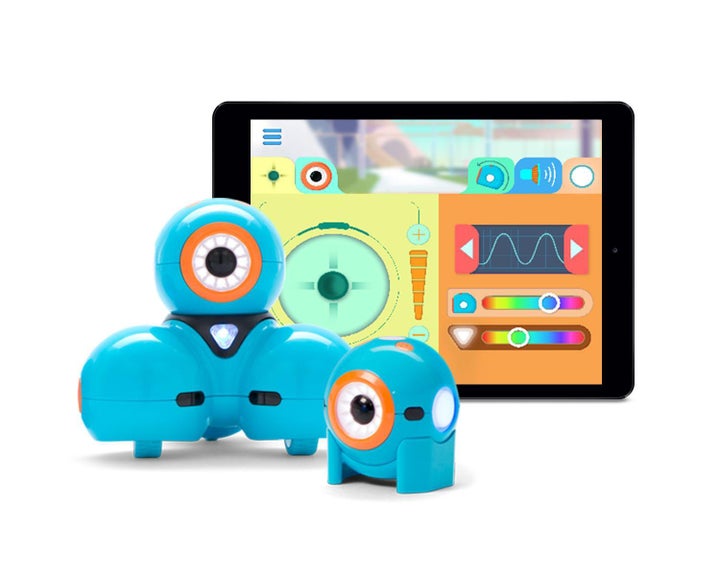
In Part 1 of this series we looked whether coding is an important skill. Now let’s look at how to decide which of the many ways of teaching kids to code might work best.
Products on the market that claim to teach kids to code are multiplying faster than prime numbers. The variety can be overwhelming. Often it comes down to knowing your child’s learning style and their degree of commitment to learning to code. I’ve categorized the options in broad brush strokes and included a few of the best-of-breed tools to help you decide.

Coding Languages Made Just for Kids
There’s nothing to stop you from teaching kids to program using Python, Java or Ruby (some of the languages commonly used by today’s software developers); they can be as inscrutable as Kanji to a beginner.
Today, one of the most acclaimed languages to teach kids to code was developed at the MIT Media Lab. It’s called Scratch and it uses a system of visual blocks that you stack together to create a programing routine. Running a close second is Tynker, which also relies on visual language developed just for kids. One big difference between the two is that Tynker also incorporates using the perennial favorite Minecraft into its lessons and eventually it carries the student into Python and Java coding. Scratch is free and Tynker costs $8 for an annual subscription.
Kids who enjoy these screen-based coding exercises tend to be good at abstract thinking – in other words knowing that the code on the screen will ultimately run as a program. Another interesting destination is Code.org. It provides an aggregate of many coding languages and exercises for kids and the first hour of lessons is free. The cool thing about Code.org is that many of the coding classes are contextual, so whether you like the NBA or the Mona Lisa there are environments for learning coding that may have personal appeal.
After School and Online Coding Schools
Some kids love the comradery and group-think of a classroom setting. Start with your own community and search for after school or local programs. Sylvan Learning has a nationwide program (mostly in cities) based on Tynker. A growing franchise with a hint of that hacker attitude is theCoderSchool. They’re starting nationwide franchises, but being born out of that Silicon Valley hipness has an appeal that some other traditional programs may not.

Using Physical Objects
If sitting down in front of a computer screen to learn coding is not your kid’s MO, another way to learn to code is with physical manipulables. The idea is that you learn to code by doing things with real objects in the real world.
Some of my favorites include the new Osmo Coding Awbie which teaches basic Boolean logic to the very young as they literally piece together programing puzzles. And because it uses the Osmo Base, you can use it for other games like drawing or math, making it a great bang for the buck. LEGO BOOST is a perfect choice for LEGO lovers who get to build an animal, then code their creation using a simple app, and finally play with what they’ve coded. It’s a complete learning cycle. Even toddlers can get in on the act, seeing the cause of and effect of modular programing blocks like this smart jigsaw-like puzzle, Cubetto.
More advanced coders and committed coders should look at Let’s Start Coding. Its Base Kit contains a microcontroller (mini computer), LEDs, a speaker and a series of instructions that teach you typed coding. Lesson 1 has you changing the speed that an LED light is blinking.

Kids love robots and robots love code which makes manipulating robots a perfect way to begin to understand basic coding logic. Wonder Workshop teaches coding through two adorable robots named Dot and Dash. Dot and Dash learn to sing, map their way around the house, become an alarm and more all using blocks of code. Skewing a bit more to the toy side of the equation, WowWee’s MiP teaches coding by putting the kids in command of their robotic dog. The newest in the line, Minion MIP offers a special context for Minion lovers. SpinMaster’s Meccano line also teaches basic programming by allowing kids to “be the boss” over their robot creation. The original Meccano was expensive and labor intensive to build but the new Meccanoid 2.0 can is more petite and can be programmed by simply moving it’s body parts to let it “remember” the moves. You can progress from there.
Lastly, Jewelbots trys to attract pre-teen girls to enjoy coding by providing them kits to code their own pieces of interactive jewelry.
Robin Raskin is founder of Living in Digital Times (LIDT), a team of technophiles who bring together top experts and the latest innovations that intersect lifestyle and technology. LIDT produces conferences and expos at CES and throughout the year focusing on how technology enhances every aspect of our lives through the eyes of today’s digital consumer.
